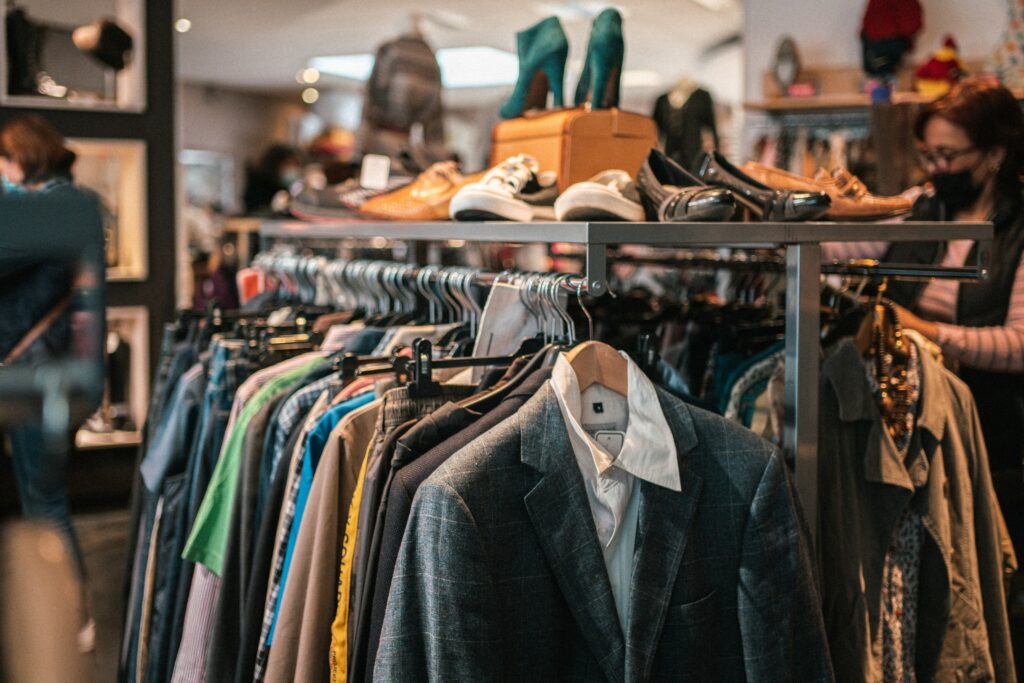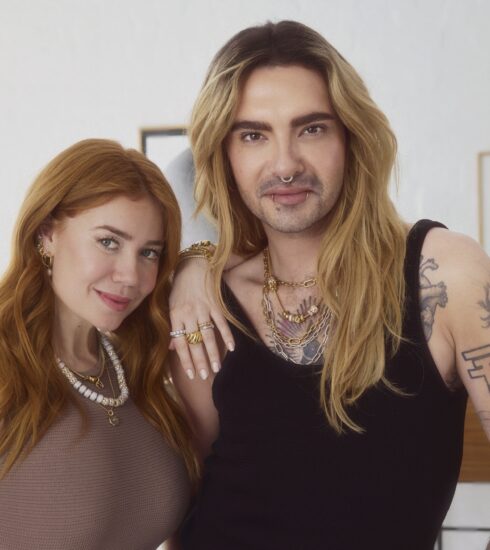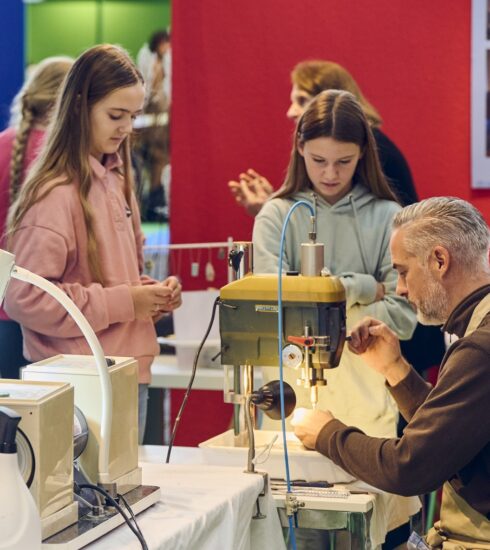Consumer trends and style: all vintage or what?
Consumer trends and style: all vintage or what?
A trend in the world of jewelry goes by the name "vintage." I argue that this isn't just a whim of nostalgia—there's more to it. A look at the textile industry can provide some insight.
Left: Grandma's jewelry box with a pearl necklace. Vintage jewelry is in. © Anna Stampfli/ Unsplash.com
Consumption: Where is it going?
Where is the economy headed? What will my customers buy in the future? How should I prepare for the future? We all sometimes wish we had a crystal ball to see into the future and prepare for what's to come. Germany is currently in a recession – which seems to be easing slightly at the moment, but nothing is certain.
Are there at least a few guiding principles in the jewelry world that we can orient ourselves by? Yes, there are definitely some. Current developments in the textile fashion industry can provide insight into what's currently on the minds of consumers.

Development: The second-hand market is growing
A look at the European textile fashion market: Secondhand has been on the rise there for years. KPMG, an international management consultancy headquartered in the Netherlands, conducted a study for the French Association for Circular Fashion. According to this, the market for second-hand fashion in Europe could reach a volume of 26 billion euros in the next five years. For comparison, it currently stands at 15.9 billion. This corresponds to an average annual growth of 8.5 percent.
In Spain, average growth of 8.1 percent is expected between 2024 and 2034. In Italy, it's estimated at 7.4 percent, and in Germany, it's still an average of 5.4 percent. This development is being driven by price awareness and sustainability concerns. According to KPMG, buying secondhand fashion extends the lifespan of garments by 2.2 years.
What conclusions can we draw from this? Buying clothes that have already had a previous owner is becoming a habit for many people. It's easy on the wallet—which fits perfectly with our economic situation—and contributes to a clear conscience about having helped the environment a little.
“Vintage” requests on eBay and success on Vinted
Want more proof that there's a clear trend here? Something similar can be observed on eBay: The online marketplace has published its first watchlist trend study. It states that by 2024, nearly 40 percent of clothing, shoes, and accessories sold will be secondhand. eBay also receives 1,200 searches for the term "vintage" every minute. These results are based on the real-time shopping behavior of 134 million eBay users from a pool of 2.3 million listings.
The secondhand app Vinted recorded a 330 percent increase in sales in 2024.
The now very popular secondhand app Vinted is also flying high and has reported sales of 813.4 euros for 2024. This corresponds to a net profit of a whopping 330 percent. According to the Lithuanian company, the success is partly due to the introduction of two new product categories: high-tech and luxury items. "Luxury" is the key word here, and I'd like to focus on it.
Jewelry trend: vintage and high-quality
So, after this excursion, let's return to jewelry. I want to try to bridge the gap between the developments on eBay, Vinted, and the like I've just outlined and show how these trends are reflected in the jewelry world. The drivers, as already mentioned, are the factors of cost and sustainability.
The vintage theme in general has also been a feature of jewelry for a few years now and has been declared a trend again this year. Of course, this includes not only genuine vintage pieces from past decades, but also new creations in a vintage style. Recently, the 70s and 80s were very popular, and currently, many designs are emerging that are inspired by the Art Deco style that dominated the 1920s and 30s. These trends open the door to giving "old" jewelry you already have at home a new lease of life.


Buying nothing new and instead digging deeper into your jewelry box is, of course, the most cost-effective and sustainable trend imaginable. However, it's difficult to measure how many people do this.
One alternative is to buy vintage jewelry. This usually provides a high-quality product at a lower price – with one caveat, however: Genuine vintage treasures can often be found at auctions or online platforms, which often also auction the pieces. The hunt for special treasures requires a certain amount of know-how, patience, skill, and luck when bidding – this way of buying jewelry isn't so easily accessible. I can't say how trustworthy online platforms offering genuine vintage jewelry for immediate purchase are. Personally, I haven't yet dared to try the subject. Perhaps many others feel the same way.
Making old jewelry socially acceptable
The vintage trend is making old jewelry socially acceptable again, thus providing an incentive to repair or rework old pieces. The prerequisite for this is that the materials used are high-quality – in the case of gold, this means an alloy of at least 14 karat quality. It's quite possible that people's awareness of the future of jewelry has increased – because since the coronavirus pandemic, at the very latest, we've also observed that people are increasingly buying higher-quality items, but also less frequently.
Real jewelry is more durable, retains its value, and can be passed down, reworked, or sold later. However, caution should be exercised if you intend to view the jewelry as an investment. The high price of some jewelry stems from the design or the brand name. When in doubt, only the material value counts in the end, and unfortunately, the jewelry must be sold at a loss. One way to enjoy real jewelry and spend your money wisely is to commission a goldsmith or purchase items from a jeweler's workshop. This interview with master goldsmith Rainer Fein is relevant to this topic.
The fact is: genuine jewelry is inherently a very sustainable product that, with proper care, will last many times longer than a textile. Tarnished silver can be cleaned, small parts like eyelets or settings can be repaired, and stones can be recut. Bonus points: By visiting a goldsmith, you're also supporting a small business rather than a large corporation—which are now a thorn in the side of many of the younger generation.
It's said that trends emerge not only from changing needs—the recession certainly increases the need for value for money and affordable options—but also from targeted marketing campaigns. In this case, I believe the marketing of the major brands has jumped on a bandwagon set by consumers. At least in textile fashion, browsing for old designs and cool vintage pieces at the corner store is also associated with a certain romanticism and nostalgia.
When good and sustainable consumer behavior meets beauty and meaningfulness, it has the potential to become a trend that will stay with us for a long time to come. What's needed to help this trend get off the ground is education. About what constitutes a genuine piece of jewelry compared to inexpensive costume jewelry. About who the trustworthy contacts are—and that they're often more likely to be found in brick-and-mortar stores than online.






